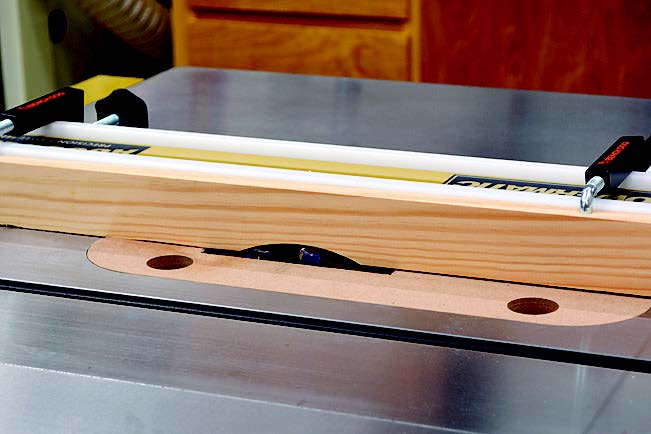
I have seen many uses of auxiliary fences or sacrificial fences (a shop-made fence designed to protect a store-bought fence particularly during dado cuts) illustrated in woodworking magazines. Is there a general principle that governs their use? How do you decide when to use one? What about the safety issues of using a fence and a miter gauge at the same time?
Michael Dresdner: Use a sacrificial fence when it is safer or necessary to have part of the blade buried in the fence, such as when cutting accurately sized rabbets with a stack dado along the length of a board. There is never a time when it is safe to use both a miter gauge and a fence, as that creates a kickback zone, possibly with you in it.
Lee Grindinger: Use an auxiliary fence to protect your regular fence. Use an auxiliary fence when you need a function your regular fence does not provide. Don’t use an auxiliary fence unless you need it.
It’s common to use a fence as a stop when doing certain cuts on a table saw. Cutting tenons, grooves and dados can all be done safely using the fence as a stop. If you use the fence as a stop in a through and through cut clamp a block to the fence well behind the blade so the work piece is clear of the fence when it contacts the blade. Better yet, screw an auxiliary fence to your miter gauge, clamp a block to this fence rather than using the rip fence at all. If you use a fence in conjunction with a miter gauge and allow a work piece to become trapped between the fence and the blade you’re almost certain to get a very nasty kickback. If you find that your miter gauge is too sloppy to use on it’s own buy a second one and screw an auxiliary fence to both. This uses both grooves in the saw table are makes for much more accurate results.





